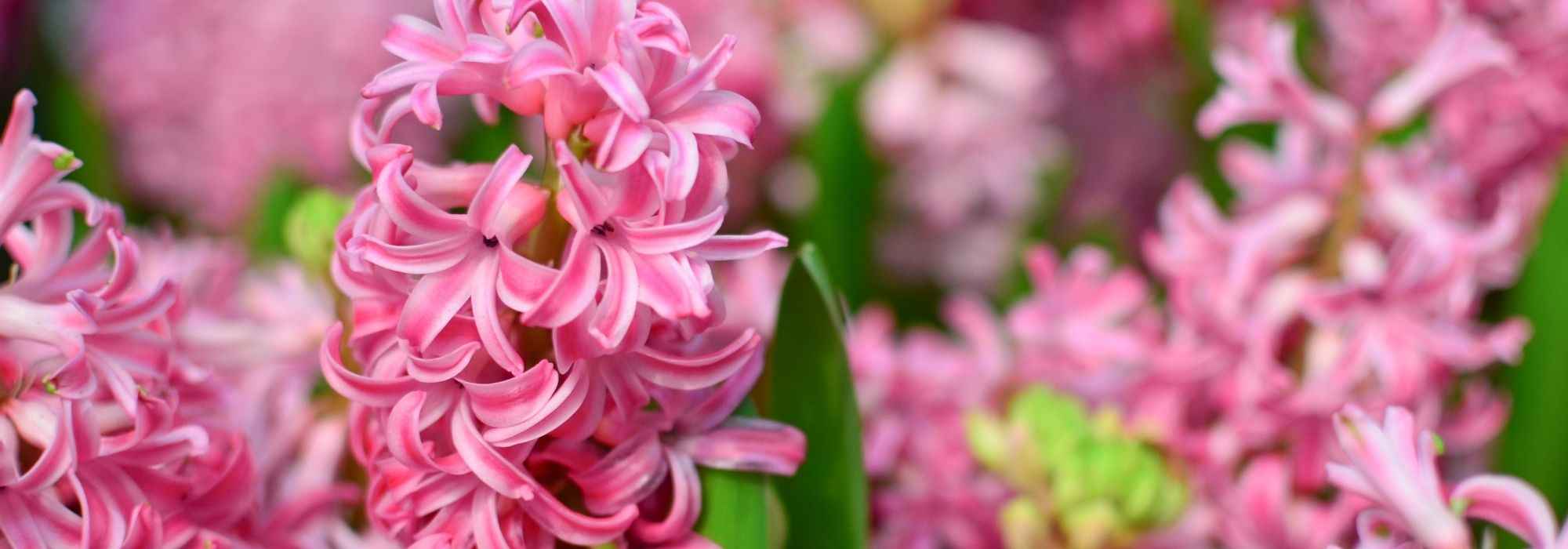
Planting hyacinths in the garden or in pots: when and how to do it?
Our tips
Contents
In spring, Hyacinths (sometimes referred to as “Hyacinths”) are among the first bulbous plants to bloom, sometimes even as early as the end of winter! They herald the arrival of spring with their numerous shades: white, yellow, orange, pink, red, purple, blue, or even black! The flowers add a splash of colour and delightfully fragrance the garden where the bulbs naturalise easily and require little maintenance. Their sweet scent is pure bliss whether growing hyacinths indoors or outdoors. Blooming in spring alongside other spring bulbs like daffodils, muscari, and tulips, they later disappear to make way for other plants. Discover all our tips for successfully planting Hyacinths in your garden or in pots!
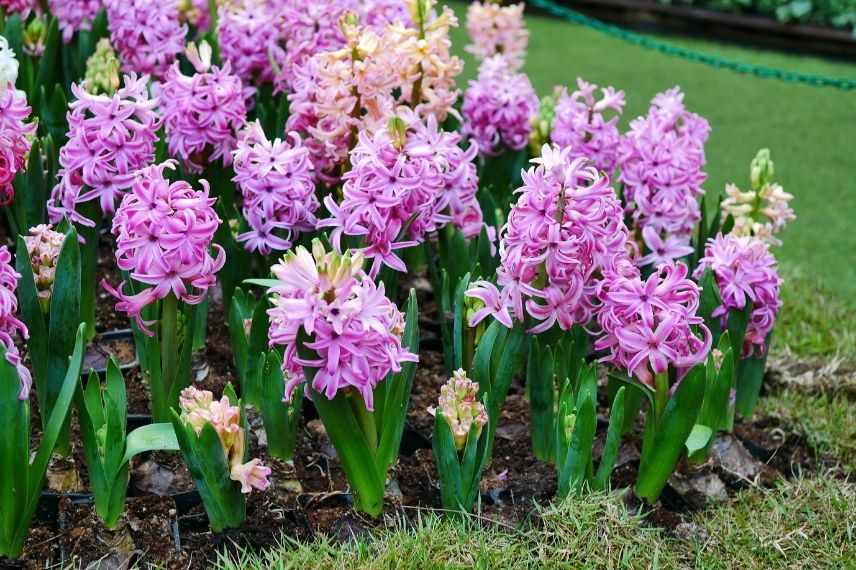
Hyacinth: when to plant the bulbs?
We recommend planting them in autumn, from September to November. The bulbs will have time to settle in and flower by early spring. They can also be planted later, until December. This will result in them flowering later in spring and for a shorter duration. Note that Hyacinth requires a period of cold and low light to trigger its flowering in spring.
Read also
Hyacinth: planting, growing and careHyacinth indoors or outdoors: where to plant them?
- Plant them in open ground in full sun or partial shade, as well as in well-draining soil. Indeed, hyacinths hate excess moisture, which causes bulb rot.
- After planting, place your planter or pot in a cool, dark place. In spring, when growth resumes, move your pot to a bright location, but always protected from the scorching rays of the sun.
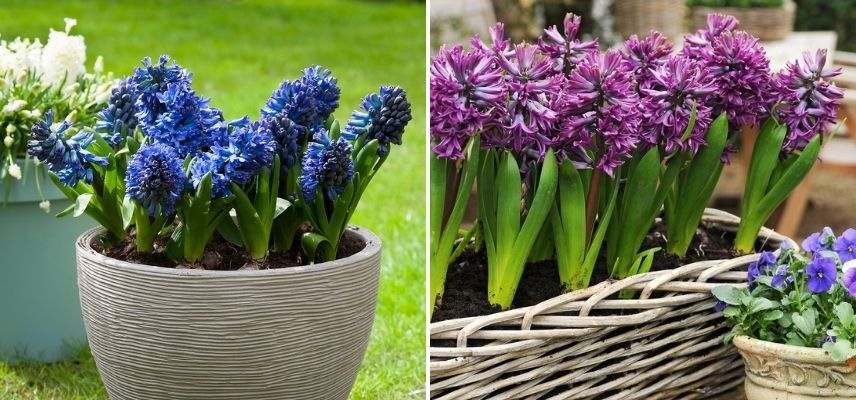
Discover other Hyacinths
View all →Available in 0 sizes
Available in 0 sizes
Available in 0 sizes
Available in 1 sizes
Available in 0 sizes
Available in 0 sizes
Available in 1 sizes
Available in 1 sizes
Available in 1 sizes
Available in 1 sizes
How to plant hyacinths?
In open ground
1) The necessary equipment:
- Hyacinth bulbs (Note: the bulbs should show no signs of mould)
- sand or potting soil
- a bulb planter (or a standard planter will also do)
2) Preparation:
Work your soil to a depth of about fifteen centimetres. It should be light. To achieve this, break up clumps using a rake and remove weeds. Mix sand or potting soil into your garden soil to improve drainage. If your soil is poor, consider adding bulb fertiliser.
3) Planting:
For the best effect, we recommend planting your Hyacinths in groups to achieve a mass flowering and create splashes of colour.
- Position your bulbs in the ground, grouping them together. Space them about fifteen centimetres apart.
- Using the planter, dig a hole about 10 centimetres deep for each bulb, one after the other.
- If your soil is particularly heavy and tends to stay wet, place a layer of sand at the bottom of the planting hole.
- Place your bulb with the point facing upwards.
- Cover with the soil removed using your planter, firm down, and then water lightly.
If you do not have a bulb planter, you can dig a wide hole that is flat and deep, about 10 centimetres. Place the bulbs in without them touching each other, they must not touch. Then, cover gently and firm down. Note that the base of the bulb should be in contact with the soil.
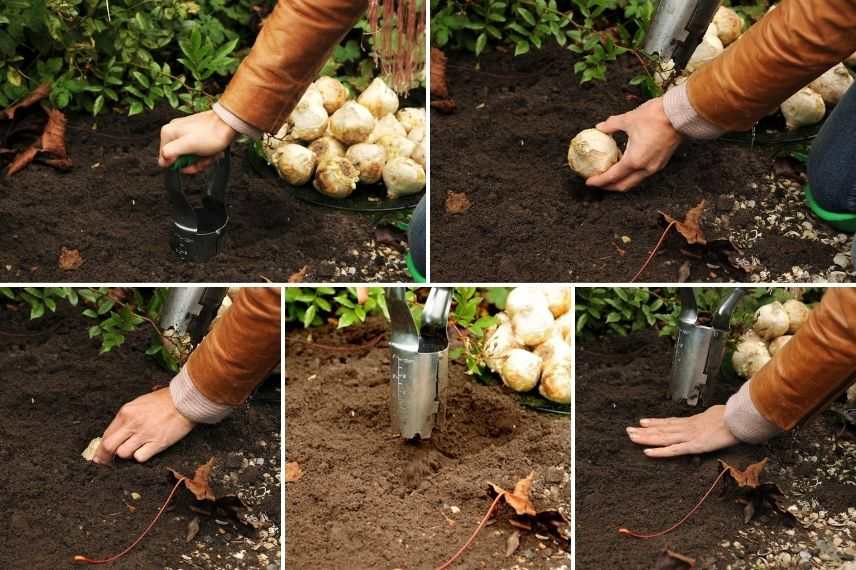 Ensure you plant your bulb with the point facing upwards.
Ensure you plant your bulb with the point facing upwards.
If you wish to plant them with other bulbous plants, you can place them randomly in your bed. For a natural result, the simplest method is to mix all the spring bulbs, toss them, and plant them in those spots.
Also, check out our video on planting bulbs in a bed without tiring yourself:
In Pots
1) The necessary equipment:
- Hyacinth bulbs
- garden soil, sand, and potting soil in equal quantities
- clay balls or gravel
- a pot or planter about 30 cm deep
2) Planting:
- Place a layer of clay balls or gravel at the bottom of your pot for effective drainage.
- Mix the soil, sand, and potting soil.
- Fill your planter with potting soil up to about 10 cm from the top.
- Arrange your bulbs without them touching, with the point facing upwards.
- Cover with substrate and water gently.
 After placing a drainage layer and potting soil, arrange your bulbs and cover them with substrate.
After placing a drainage layer and potting soil, arrange your bulbs and cover them with substrate.
How to water hyacinths after planting?
Hyacinth can be affected by grey mould (also known as botrytis). It manifests as brown spots that become grey and powdery if planting conditions are too damp. To learn more, check our advice sheet Botrytis or Grey Mould. Therefore, watering should not be taken lightly. The soil should not be waterlogged, nor too dry. The simplest and most effective method to determine if watering is needed is to touch and observe the soil! Trust your senses. Also, consider the weather. Often, it is the rain that takes care of watering. During winter, in regions north of the Loire, there is no need to water. In spring, during flowering and in dry weather, moderate watering twice a month may be necessary. In case of drought in summer, we recommend regular watering to prevent the bulb from drying out.
For Hyacinth planted in containers, watering should be more frequent: the substrate should always remain slightly moist, not soggy. In autumn-winter, it is advisable to place the pot under a roof to better manage watering during rainy periods.
Caring for hyacinths during and after flowering
Hyacinths require very little maintenance. In open ground, Hyacinth bulbs can withstand negative temperatures down to -15°C. During flowering, cut off the faded flower spikes to prevent the plant from exhausting itself producing seeds. After flowering, leave the foliage in place until it wilts and turns completely yellow. Indeed, during this period, the plant will continue to store energy.
Your garden may be visited by rodents such as voles and mice that love bulbs. To protect your bulbs from these pests, know that there are bulb baskets in which you should place the bulbs during planting. Find all the details on how to protect your bulbs in our guide.
Snails and slugs are fond of its foliage. Discover our tips for making a slug trap, as well as the guide Slugs: 7 ways to fight effectively and naturally.
How to store a Hyacinth bulb?
In regions with very harsh winters (temperatures below -15°C), we recommend lifting the bulbs from the soil and removing as much soil as possible. Once dry, cut the foliage and store them in a paper bag or a net, away from light, moisture, and frost. They can be replanted next autumn.
Can indoor-grown hyacinths be replanted after flowering?
It is entirely possible to replant your hyacinths after their flowering to see them bloom again in the following years, although they tend to be less spectacular. Once the flowers have faded, cut the flower stem, but allow the foliage to yellow naturally. This process is important, as the leaves continue to nourish the bulb and help it replenish its reserves for the next season. When the foliage is completely dry and yellowed, you can dig up the bulbs and clean them.
When to plant indoor hyacinth bulbs?: Store the hyacinth bulbs in a cool, dry, dark place until autumn, which is the ideal time to replant them in the ground or in pots.
For further reading
- Discover our ideas for combining Hyacinths in the garden, in pots or in cut flower arrangements
- Subscribe!
- Contents



































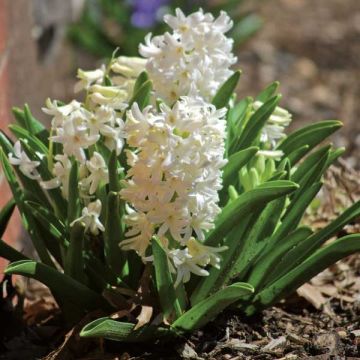
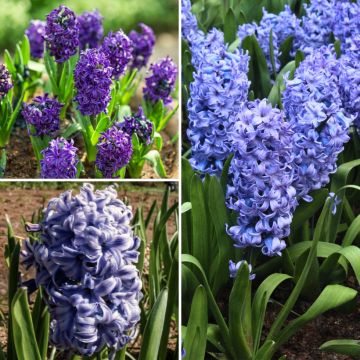

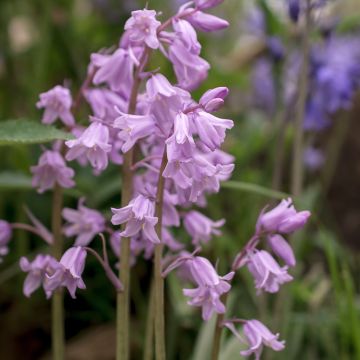


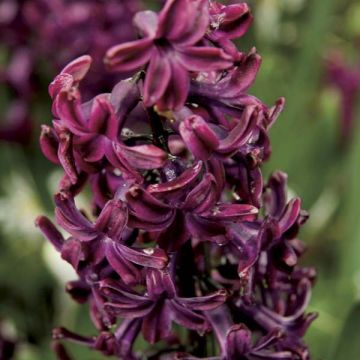
Comments